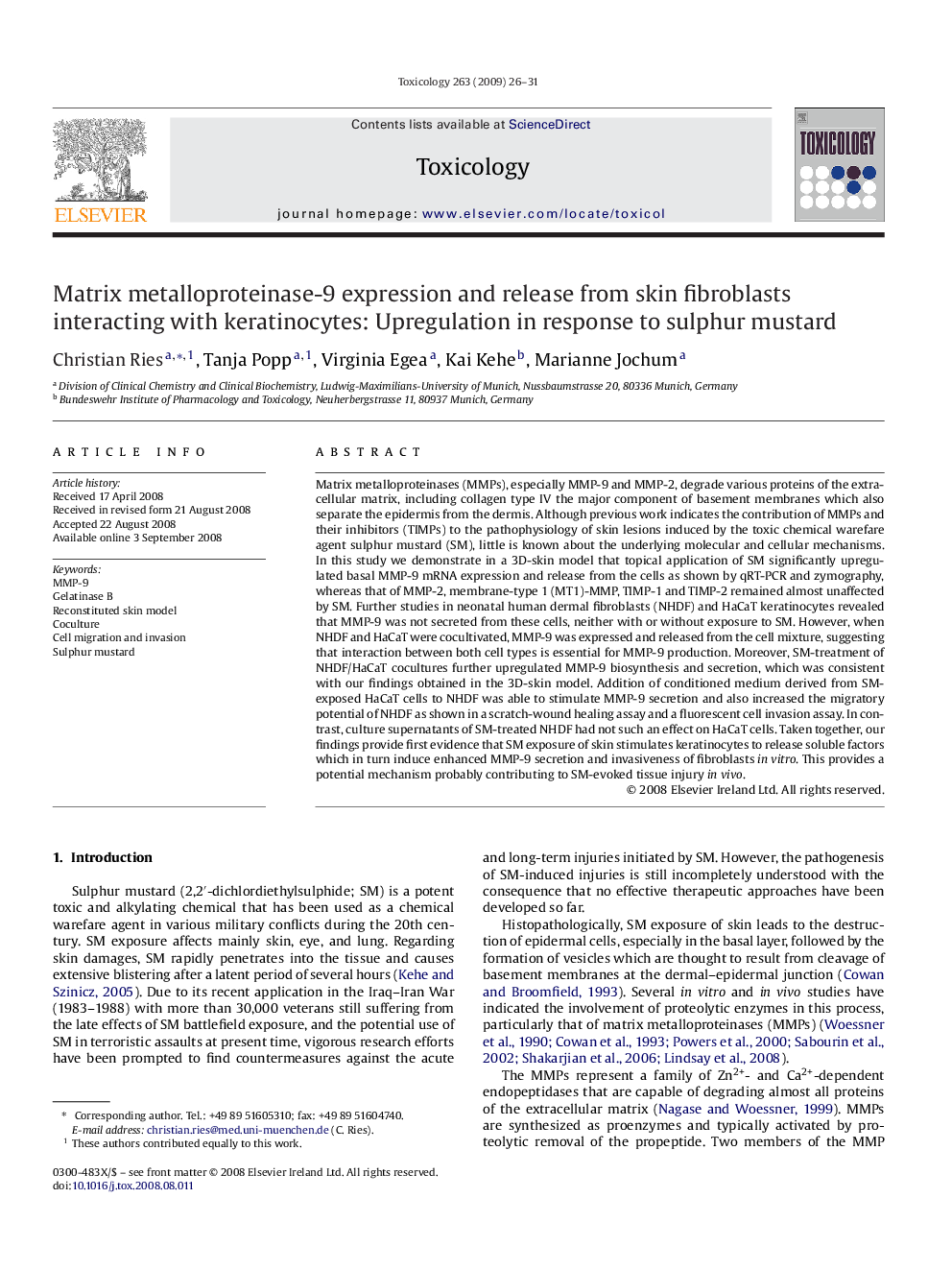| کد مقاله | کد نشریه | سال انتشار | مقاله انگلیسی | نسخه تمام متن |
|---|---|---|---|---|
| 2596695 | 1132543 | 2009 | 6 صفحه PDF | دانلود رایگان |

Matrix metalloproteinases (MMPs), especially MMP-9 and MMP-2, degrade various proteins of the extracellular matrix, including collagen type IV the major component of basement membranes which also separate the epidermis from the dermis. Although previous work indicates the contribution of MMPs and their inhibitors (TIMPs) to the pathophysiology of skin lesions induced by the toxic chemical warefare agent sulphur mustard (SM), little is known about the underlying molecular and cellular mechanisms. In this study we demonstrate in a 3D-skin model that topical application of SM significantly upregulated basal MMP-9 mRNA expression and release from the cells as shown by qRT-PCR and zymography, whereas that of MMP-2, membrane-type 1 (MT1)-MMP, TIMP-1 and TIMP-2 remained almost unaffected by SM. Further studies in neonatal human dermal fibroblasts (NHDF) and HaCaT keratinocytes revealed that MMP-9 was not secreted from these cells, neither with or without exposure to SM. However, when NHDF and HaCaT were cocultivated, MMP-9 was expressed and released from the cell mixture, suggesting that interaction between both cell types is essential for MMP-9 production. Moreover, SM-treatment of NHDF/HaCaT cocultures further upregulated MMP-9 biosynthesis and secretion, which was consistent with our findings obtained in the 3D-skin model. Addition of conditioned medium derived from SM-exposed HaCaT cells to NHDF was able to stimulate MMP-9 secretion and also increased the migratory potential of NHDF as shown in a scratch-wound healing assay and a fluorescent cell invasion assay. In contrast, culture supernatants of SM-treated NHDF had not such an effect on HaCaT cells. Taken together, our findings provide first evidence that SM exposure of skin stimulates keratinocytes to release soluble factors which in turn induce enhanced MMP-9 secretion and invasiveness of fibroblasts in vitro. This provides a potential mechanism probably contributing to SM-evoked tissue injury in vivo.
Journal: Toxicology - Volume 263, Issue 1, 1 September 2009, Pages 26–31